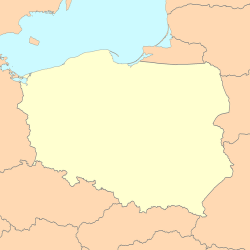Poland Military Power Ranking 2025
MPR Rank: 22nd
MPR SCORE: 1045
MPR Index: 0.4689 (1.0000 is perfect)
Reverse MPR Index: 0.5034 (0.0000 is perfect)
Z Score: +1.569 (standard deviations above the mean)
Overview
Poland ranks 22nd in the 2025 Military Power Rankings (MPR). As a frontline NATO member and critical actor in Eastern European security, Poland maintains a rapidly modernizing military geared toward territorial defense, deterrence against Russian aggression, and alliance-based interoperability. Over the past decade, Poland has significantly upgraded its land forces, air defense systems, and missile strike capabilities, positioning itself as a leading military force in Central Europe.
Poland’s strategic posture emphasizes NATO reinforcement readiness, U.S. basing integration, and the ability to mobilize at scale in response to crises on NATO’s eastern flank.
Strengths:
Eastern Flank Deterrence and Rapid Modernization
1. Large, Modernizing Ground Forces
Poland maintains one of NATO’s largest standing armies, with:
Over 150,000 active-duty troops
More than 1,000 main battle tanks, including Leopard 2A5, PT-91, and newly acquired K2 Black Panther tanks
Expanding artillery and infantry fighting vehicle fleets with Krab self-propelled howitzers and Borsuk IFVs
2. Advanced Air and Missile Defense Integration
Poland is rapidly deploying layered missile defense systems:
Patriot PAC-3 MSE batteries under the Wisła program
CAMM-based Narew short-range air defense
Long-range precision strike via HIMARS and JASSM-ER cruise missiles for deterrent operations
3. U.S. Military Presence and NATO Integration
Poland hosts rotating U.S. Army combat brigades, air defense units, and forward-positioned prepositioned stocks
Participates in NATO Enhanced Forward Presence, Baltic exercises, and coalition operations, boosting alliance readiness on the eastern flank
4. Defense Industrial Growth and Strategic Procurement
Poland is investing heavily in domestic and foreign procurement, including:
F-35A Lightning II stealth fighters
Apache helicopters, Bayraktar TB2 drones, and FA-50 light fighters
Expanding domestic production of radars, munitions, and military vehicles
Why Poland Is Ranked 22nd
Poland’s ranking reflects its growing capability and NATO reliability, though limited by current airpower scale and strategic strike autonomy.
1. Air Force Still in Transition
While modernizing, Poland’s air force still relies partly on MiG-29 and Su-22 aircraft
Full transition to F-35s, FA-50s, and other platforms remains ongoing, limiting immediate aerial dominance
2. No Strategic Deterrent or Blue-Water Navy
Poland lacks:
Nuclear weapons
Ballistic missile systems
Global naval reach; its navy consists mostly of coastal defense ships, submarines, and frigates
Maritime capability remains limited to Baltic operations
3. Defense Expansion Amid Regional Risk
While procurement is strong, Poland’s proximity to Russia, Belarus, and the Kaliningrad exclave places high demands on force readiness and logistical resilience
Rapid buildup also poses challenges for training, sustainment, and industrial integration
Conclusion
Poland fields a fast-modernizing, NATO-integrated force at the core of Eastern European deterrence. Its strength lies in ground force scale, missile defense readiness, and operational cohesion with U.S. and NATO partners.
In the MPR framework—where scale, combat readiness, and strategic posture are key—Poland ranks 22nd, reflecting its emerging status as a regional military leader, though still lacking global projection assets and strategic deterrents.
Military Strength and Force Projection
Active Military Personnel: 160,000 (IISS 2023)
Reserve Personnel: 250,000 (CIA World Factbook)
Paramilitary Forces: 20,000+
Ground Forces Personnel: 120,000 (IISS 2023)
Navy Personnel: 18,000
Air Force Personnel: 22,000
Ground Forces
Main Battle Tanks (MBTs): 1,000+ (IISS 2023, SIPRI 2023)
Armored Fighting Vehicles (AFVs): 2,500+
Artillery (Towed and Self-Propelled): 1,200+
Multiple Launch Rocket Systems (MLRS): 150+
Air Force
Combat Aircraft: 180+ (SIPRI 2023)
Helicopters: 100+
Transport Aircraft: 35+
Aircraft Breakdown:
F-16 Fighter Jets: 48
MiG-29 Fighter Jets: 25 (under modernization programs)
Su-22 Fighter-Bombers: 15 (to be replaced)
Naval Forces
Submarines: 2
Frigates: 2
Corvettes: 3
Fast Attack Craft: 10+
Landing Ships: 5
Missile Capabilities
Poland is significantly enhancing its missile defense and air capabilities, with new systems being acquired through U.S. and NATO partnerships.
Surface-to-Air Missiles (SAMs): Patriot Missile Defense System (U.S.)
Ballistic Missile Defense: Aegis Ashore (part of NATO BMD)
Anti-Tank Missiles: Javelin and Spike (jointly produced with Israel)
Strategic Partnerships
Poland's military modernization is driven by its strategic alliances with NATO, particularly with the United States. Poland hosts U.S. troops and missile defense systems, ensuring its strategic role in European defense. The Polish Armed Forces regularly participate in NATO exercises and enhance interoperability with other NATO forces.
Military History & Combat Experience
Poland’s military history is shaped by centuries of warfare, foreign occupation, and a deep tradition of resistance, culminating in its modern role as a NATO frontline state. Poland has fought in both global and regional conflicts and has developed a military culture emphasizing resilience, territorial defense, and alliance integration.
Polish-Soviet War (1919–1921): Following World War I, Poland fought a major conflict against Bolshevik Russia, securing independence and halting communist expansion into Europe. The decisive Battle of Warsaw—often called the “Miracle on the Vistula”—cemented Poland’s military reputation.
World War II (1939–1945): Invaded by both Nazi Germany and the Soviet Union, Poland became the first victim of the war. The Polish Armed Forces in exile fought in key Allied campaigns such as Monte Cassino, the Battle of Britain, and Normandy, while resistance movements like the Home Army (Armia Krajowa) carried out major uprisings in occupied territory.
Cold War Period (1945–1989): As a Warsaw Pact member under Soviet control, Poland maintained a large conscript military force, primarily focused on territorial defense and internal suppression. Despite Soviet dominance, the Polish military retained its own doctrine and later played a role in the peaceful transition away from communism.
Post-Communist Modernization (1990s–2000s): After joining NATO in 1999, Poland began restructuring its military along Western lines. It retired Soviet-era systems, introduced professionalization, and participated in NATO peacekeeping missions in Kosovo and Bosnia, gaining valuable operational exposure.
Afghanistan and Iraq Deployments (2000s–2010s): Poland contributed thousands of troops to ISAF in Afghanistan and the U.S.-led coalition in Iraq, often commanding multinational sectors and engaging in combat operations, reconstruction, and training missions.
Ukraine and Eastern Europe Response (2014–Present): Following Russia’s annexation of Crimea, Poland intensified its defense posture, hosting NATO troops and participating in Baltic air policing, forward deployments, and major exercises like Anakonda. It has supplied weapons and logistics to Ukraine, reinforcing its role as a frontline deterrent state.
Poland’s military experience reflects a legacy of fighting for sovereignty, adapting to geopolitical transitions, and playing a central role in European collective defense. Today, its armed forces are among the most combat-experienced, mobilization-ready, and NATO-integrated in Central and Eastern Europe.
General Information
Demographics and Geography
Population: ~37.7 million (2024 est.)
Population Available for Military Service: ~15.2 million (males and females aged 18–49)
Geographic Area: 312,696 km²
Land Boundaries: 3,511 km
Bordering Countries: Belarus, Czech Republic, Germany, Lithuania, Russia (Kaliningrad), Slovakia, Ukraine
Coastline: 440 km (Baltic Sea)
Climate: Temperate; cold, cloudy winters with frequent precipitation; mild summers
Terrain: Mostly flat plains; mountains in the south
Natural Resources: Coal, sulfur, copper, natural gas, silver, lead, salt, arable land
Proven Oil Reserves: ~96 million barrels
Proven Natural Gas Reserves: ~126 billion cubic meters
Economic Indicators
Defense Budget (2025): ~$36 billion USD
Defense Budget as % of GDP: ~3.9%
GDP (PPP): ~$1.76 trillion USD
GDP per Capita (PPP): ~$46,800
External Debt: ~$385 billion USD
Military Expenditure Trend (last 5 years): Rapid increase post-2022; largest defense buildup in Europe by share of GDP
Military Infrastructure and Readiness
Military Service Obligation: Voluntary enlistment; selective compulsory basic training reintroduced in 2022
Primary Defense Focus: Deterrence of Russian aggression, NATO frontline operations, territorial defense
Military Industry Base: Strong and expanding; includes PGZ Group, HSW, Mesko, WB Group
Cyber/Electronic Warfare Capability: Advanced and NATO-integrated; separate Cyber Defense Forces command
Nuclear Warhead Inventory: None (non-nuclear state; potential NATO nuclear sharing site under consideration)
Major Military Districts / Commands: Divided among Land Forces, Air Force, Navy, Special Forces, and Territorial Defense Force
Missile Inventory Highlights: HIMARS, CAMM, NSM, Patriot PAC-3, K239 Chunmoo (South Korean), Piorun MANPADS
Reservist Call-up Readiness / Timeline: Territorial Defense Force is on active standby; full reserve call-up possible within 1–2 weeks
Reservist Force Size: ~250,000 trained reservists including 36,000+ in Territorial Defense Force
Space, Intelligence, and Strategic Infrastructure
Space or Satellite Programs: Polish Space Agency (POLSA); investing in sovereign earth observation satellites
Military Satellite Inventory: Limited; dependent on EU and NATO systems; expanding independent surveillance capacity
Intelligence Infrastructure: AW (foreign), SKW (military), ABW (domestic security)
Intelligence Sharing Partnerships: NATO, EU, bilateral ties with U.S., UK, Ukraine
Airports (Total): ~126 (civilian and military)
Major Military Airports: Powidz AB, Krzesiny AB, Lask AB, Debrzno AB
Naval Power and Maritime Logistics
Merchant Marine Fleet: ~110 vessels
Major Ports: Gdańsk, Gdynia, Szczecin
Naval Infrastructure: Coastal navy focused on Baltic security; includes submarines, corvettes, minesweepers
Naval Replenishment Capability: Regional; limited blue-water support capacity
Domestic Mobility and Infrastructure
Railway Network: ~19,400 km
Roadways: ~440,000 km
Energy and Fuel Logistics
Oil Production: ~25,000 barrels per day
Energy Imports: Major importer of LNG, petroleum, and gas (diversified away from Russia)
Strategic Petroleum Reserves: ~90 million barrels (includes EU-mandated reserves)
Defense Production and Strategic Forces
Domestic Defense Production: Modernizing rapidly; produces tanks, artillery, small arms, UAVs, and missile systems
Military Installations (Domestic): Over 100 military bases, training ranges, and C2 nodes across the country
Military Installations (Overseas): Small deployments in NATO missions; training presence in Ukraine and Lithuania
Foreign Military Personnel Presence: ~10,000 U.S. and NATO troops stationed in Poland; major NATO logistics and prepositioning hub
Defense Alliances: NATO member, EU defense participant (PESCO), bilateral defense treaties with U.S., UK, South Korea
Strategic Airlift Capability: Operates C-130s, M-28s; part of NATO Strategic Airlift Capability (SAC) and SALIS programs
Wartime Industrial Surge Capacity: High; legally mandated and industrially supported mobilization capability
Research and Industry Support
Defense R&D Investment: Growing; focus on radar, artillery, drones, anti-missile defense, and AI-integrated systems
Key Wartime Industries Beyond Defense: Orlen (energy), PKP (railways), Solaris (transport), KGHM (metals), PGNiG (gas)
Political and Administrative Structure
Capital: Warsaw
Founding Date: November 11, 1918 (modern independence); democratic Third Republic since 1989
System of Government: Unitary parliamentary republic



